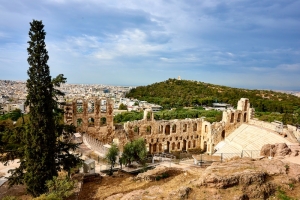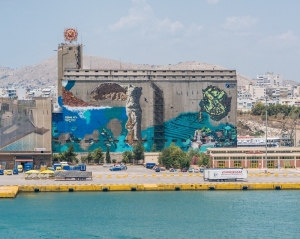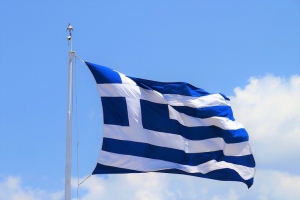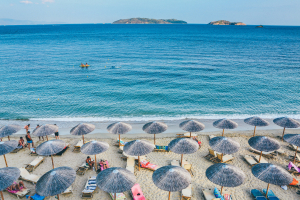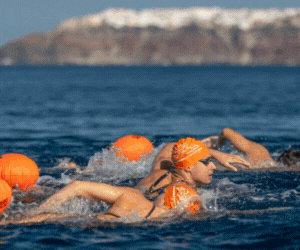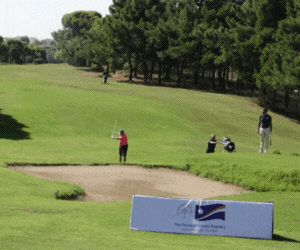XpatAthens
How The City Of Athens Was Named
Originally posted on: e-istoria.com
Graffiti City - The Rise Of Street Art In Athens
Greece Launches The First European Cultural Heritage Year Events
Events will take place across Europe this year. Please click HERE to find out what's happening in Greece!
May 15 - Happy International Family Day
Lights Out In Athens
Old Tobacco Factory To Be Reborn As A New Art Space In Athens
Completed in 1930, the Tobacco Factory, with its distinctive bright façade, was forged in the spirit of modernism to serve the country’s booming cigarette manufacturing industry. Once a symbol of Greece’s industrialisation and progress, the historic venue will now provide a “profoundly resonant” incubator for Greek contemporary art, according to Madeleine Grynsztejn, director of the Museum of Contemporary Art Chicago, who will co-curate Portals with NEON director Elina Kountouri. The Tobacco Factory exhibition and €1 million conversion project is prompted by the bicentennial celebrations of Greece’s War of Independence from the Ottoman Empire in 1821 which led to the creation of the Modern Greek State.
The pioneering Greek art foundation NEON, backed by the billionaire Greek art philanthropist Dimitris Daskalopoulos, will renovate one half of the listed monument on Lenorman Street in order to stage an international exhibition called “Portals” from June to December, before giving the landmark space back to the Greek state as a new culture hub. The other half of the sprawling site, which spans an entire block, is home to the Hellenic Parliament Library and Printing House.
“This particular moment in history takes us through a ‘portal’. When we emerge on the other side, we will need to reaffirm - for the sake of future generations - our commitment to certain values: the rule of law, human rights and democracy.” ~ NEON Director Elina Kountouri
To learn more about this project visit: thisisathens.org
Photo courtesy of: NEON
Whether you've just arrived in town – or have been here for years – Athens always has new secrets to share!
Thank you This is Athens for your contribution as an XpatAthens Partner.
5 Awards For The Authentic Marathon Swim At The 2021 Tourism Awards
The absolutely successful organization of the Authentic Marathon Swim last year, led the event to the top of the Tourism Awards with 5 awards in total. More specifically, it was distinguished with 2 Silver awards for the strategy implemented for the “Guest - Staff Protection” during the Covid-19 pandemic and its “Integrated Communications Campaign” while receiving 3 Bronze awards at the “Sports Tourism”, “Interconnection of tourism with other sectors of the Greek economy” and “Technology enhanced experience” categories for the technology solutions used to improve the travel experience.
Register Today For The Races & Acquire The Richest Participation Kits
Participants will swim with safety in the impressive 10km route (over the shipwrecks of the Naval Battle of Artemision that took place in 480 B.C.), the 3km, the 1.5km as well as the new and unique 5km route. Respectively, the younger fans of the sea will have the opportunity to test their swimming skills in the 800m children’s race. The 5km, 3km, 1.5km and 800m. routes will have Pefki beach as their starting and finishing point. Registration for the 800m children’s race is free. The event also offers a special discount on group registrations of more than 10 people. All citizens of Istiea- Edipsos will have the opportunity to take part in the 5km, 3km and 1.5km routes as well as the 800m. children’s race, completely free of charge.
Accommodation Packages At The Municipality Of Istiea-Edipsos
The Authentic Marathon Swim already collaborates with more than 35 hotels in the region, with the aim of revitalizing the sports tourism industry of Northern Evia and strengthening the Greek tourism product. Up to this point, this year’s event is enormously supported with special prices starting from 40 euros, by the following hospitality sponsors: Maria Louiza Apartments, Altamar Hotel, Villa Anastasia, Ellaeon Throesma, Kochili Apartments, Pefki Seascape Rooms, Hydna Studios, Aktaion Hotel, Arethousa Hotel, Galini Hotel Edipsos, Island, Ilios Studios, Irene Studios, Meliti Studios, Mirtia Hotel, Prigkipessa Studios, Aenaon Studios, Aidipsos Hotel, Alex Spa Hotel, Anesis, Apolonio, Artemis Rooms Pefki, Artemision Hotel, Asimina Rooms, Avli, Evia Dream, Kerasiotis Apartments, Konstantinos Hotel, Lito Hotel, Maria Studios, Melikari Studios, Oversea Rooms & Villas, Posidonio Studios, Rodon Hotel, Sunset Pefki, Thalassa Hotel, Viki Studios.
Natural Mineral Water Vikos is the Official Water. Luanvi is the event’s Official Clothing Partner.
Avance is the Official Car Rental Partner.
Target Security is the Security Partner.
Schoretsanitis Cheese Factory, Nivea Sun, Syconia and The Norman Farm are the event’s Partners.
Red Swim Academy, Swim Academy, Leandros, Swimmingclub.gr, LA Elite Fitness, APS TRIAS and Kallithea Open Water Team are the Authentic Marathon Swim’s Athletic Partners.
The event will be held in accordance with FINA regulations and the health protocol approved by the Greek General Secretariat of Sports’ Health Scientific Committee and established by the experienced team of ActiveMedia Group, in order to ensure the health of athletes and attendees.
The Authentic Marathon Swim will be held with the permission of the General Directorate of Tourism Policy of the Regional Tourism Service of Central Greece, under the auspices of the Greek National Tourism Organization. The event is co- organized by the Municipality of Istiea-Edipsos, the Region of Central Greece, the Organization of Cultural Development for Central Greece (O.P.A.S.T.E.), the Central Union of Municipalities in Greece (KEDE) and the Regional Union of Municipalities of Central Greece. ActiveMedia Group is responsible for its sports production. The race has joined the swimming community of Global Swim Series (GSS).
Photo Credit: Angelos Zymaras
Share your exciting moments and memories from the Municipality of Istiea-Edipsos and the event using the official hashtag #authenticmarathonswim
United Airlines Resumes Seasonal Service Between Athens & New York
Flight UA125 departs Athens Airport daily at 12:15 pm, arriving at Newark Liberty International Airport at 4:15 pm the same day. The return flight, UA124, departs Newark daily at 5:15 pm, arriving in Athens at 10:10 am the following day (all times local).
United’s service from Athens to New York/Newark is currently operated with Boeing 767-400 aircraft and as of May 7, the route will be operated with Boeing 787-10 Dreamliner aircraft.
The service is planned to operate until October 29 and will be joined next month by United’s daily nonstop seasonal service from Athens to Washington D.C., set to start on May 7.
Seasonal service between Athens and Washington D.C.
Flight UA983 will depart Athens daily at 11:50 am, arriving at Washington Dulles at 3:15 pm the same day. The return flight, UA982, will depart Washington daily at 5:10 pm, arriving in Athens at 9:55 am the following day (all times local).
United’s service from Athens to Washington Dulles will be operated with Boeing 787-8 Dreamliner aircraft.
To read this article in full, please visit: news.gtp.gr
Greece Breaks Record with Over 600 Awarded Blue Flag Beaches
Greece now boasts more Blue Flag beaches than ever before with 617 in total – up from 581 in 2022, according to the 2023 Blue Flag quality award list for beaches, marinas and tourism boats, released by the Hellenic Society for the Protection of Nature (EEPF).
Greece once again ranks second after Spain worldwide among 52 countries with 617 of its beaches, 18 marinas, and 6 tourism boats getting the Blue Flag label, one of the world’s most recognized voluntary eco-labels.
This is the first time Greece’s Blue Flag beaches exceed 600, which corresponds to 15 percent of the total number of beaches awarded by the program this year. Halkidiki is once again Greece’s Blue Flag champion as the destination boasts a total of 94 beaches with the prestigious eco-label.
The annual announcement of Greece’s Blue Flag beaches, marinas and recreational boats took place on Wednesday on the coast of the 5-star Pilot Beach Resort in Georgioupolis in Chania on the island of Crete.
The Blue Flag program is operated under the auspices of the Foundation for Environmental Education (FEE) and is headquartered in Copenhagen, Denmark. In Greece, the program’s coordinator is the EEPF.
On a worldwide scale the foundation awarded the international eco-label (blue flags) to 4,212 beaches, 710 marinas and 120 recreational boats for 2023.
Press here for Greece’s 2022 Blue Flag quality award list (in Greek and English).
This article was originally published on GTP Headlines
Binge-Worthy Greek Series & Movies On Netflix
Greek series and movies are making waves on Netflix, offering viewers captivating stories, stunning visuals, and a glimpse into Greek culture and history. Whether you're a fan of dark thrillers, emotional dramas, or historical epics, there’s something for everyone. Here are some binge-worthy Greek titles to dive into!
1. Σώσε Με (Save Me) – 2022 (Series, 8 Episodes)

For fans of dark, Harlan Coben-style thrillers, Save Me is an absolute must-watch. This intense series, set against the stunning backdrop of Komotini, is filled with twists and turns that will keep you on the edge of your seat. It dives deep into the struggles of minorities in Greece, shedding light on the hardships they face while delivering a gripping, fast-paced narrative. With beautiful cinematography and an atmospheric tone, this show is a standout.
Watch the trailer HERE!
2. Αν... (What If) – 2012 (Movie)

What if every decision you made could change the course of your life? Similar to Sliding Doors with Gwyneth Paltrow, written and directed by Christoforos Papakaliatis, this film stars, among others, two legendary Greek actors, Giorgos Konstantinou and Maro Kontou, from the golden era of Greek cinema. It weaves a story of love, passion, and betrayal, exploring how the choices we make shape our destiny. Perfect for those who enjoy heartfelt dramas with a philosophical twist.
Watch the trailer HERE!
3. Σμύρνη Μου Αγαπημένη (Smyrna My Beloved) – 2021 (Movie)

Written by Mimi Denisi, Smyrna My Beloved is a cinematic masterpiece and a gut-wrenching portrayal of one of the darkest chapters in Greek history. The film takes viewers on an emotional rollercoaster, recounting the tragedy of Smyrna and the suffering endured by the Greek people. While it’s not for the faint-hearted, it’s a powerful and unforgettable experience that pays tribute to resilience and survival.
Watch the trailer HERE!
4. Man of God – 2021 (Movie)
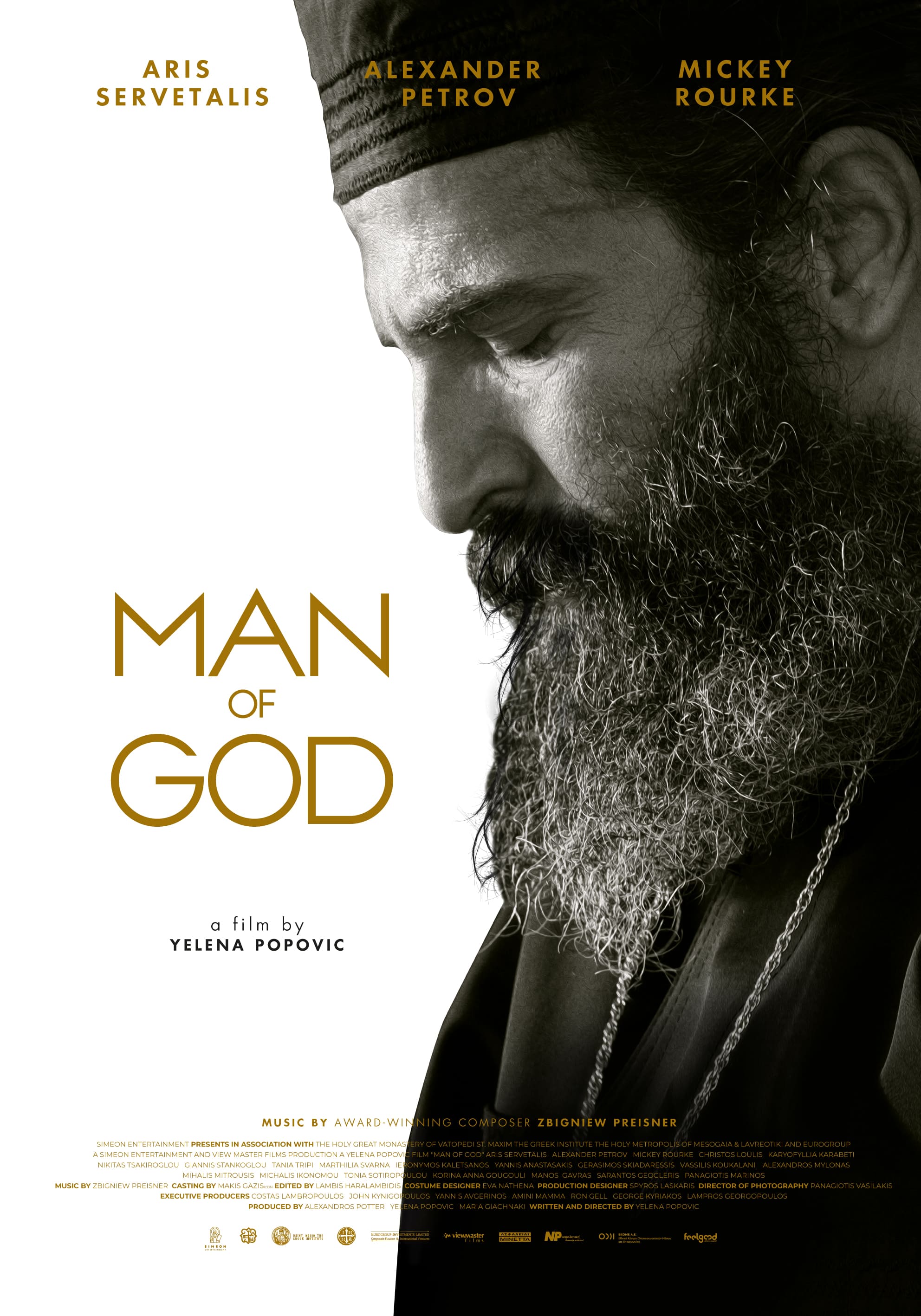
This biographical drama chronicles the life of Saint Nektarios, a revered figure in Greek Orthodox Christianity. Man of God delves into themes of faith, persecution, and redemption, with an outstanding performance by Aris Servetalis. The film’s serene pacing and moving narrative make it an inspiring watch for those looking for spiritual depth.
Watch the trailer HERE!
5. Maestro in Blue – 2022 (Series)

Set on the breathtaking island of Paxoi, Maestro in Blue is more than a love story. With Haris Alexiou, one of the greatest Greek singers, in a pivotal role, the series explores human relationships, resilience, and the struggles of minorities. It celebrates strong women and the bonds that unite communities. Beautifully shot, the series captures the essence of Greek island life, blending it with complex characters and compelling storytelling.


